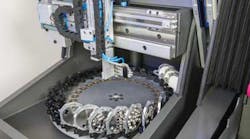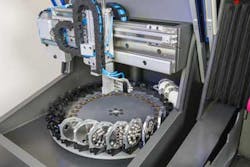As the world enters a new era of manufacturing revolution with 3-D printing, I can’t help but wonder what effects it will have on the dental industry. I speak as a second-generation dental lab owner with only two years of experience. My father, who has been in business for more than 25 years, has taught me everything I need to know regarding techniques. But there is not a single digital-related machine in our lab. As I embark on a new road to digitize my lab, many thoughts go through my mind.
Will the dramatic decrease in the cost of 3-D printing machines enable a majority of dentists to fully use in-house printing? If this is the case, 80% to 90% of the workflow of dental labs, which is single posterior teeth, will no longer be needed. What if dentists still send out complicated cases or cosmetic (anterior) cases to labs? Will this be sufficient to maintain business as a lab? Will the rapid development of 3-D printing produce better materials and technology within three to five years, in order to incorporate cosmetic cases and complicated cases in-house?
Will this be the death of the dental lab?
I also wonder about the dentist’s side of the story. Will a majority of the dentists practicing right now who have 10 to 20 years until retirement be willing to change to this new technology? Is this learning curve the reason why only 10% of dentists currently use a CAD/CAM milling machine, or is it because of the price?
On the positive side, as new up and coming dentists with full knowledge and training of 3-D printing and CAD/CAM start their businesses, which route will they take? Will some dentists prefer to leave lab work to the lab technicians, and therefore be able to spend more time working with their patients? Will the reduction in the time producing a crown due to oral scanning, 3-D printing, and other new machines create a better and more efficient relationship between dental labs and dentists? There are no definite answers, but one thing is for sure — change is coming, and it’s coming fast.
Mr. King posed these questions on LinkedIn. Dr. Terry Yacovitch joined the conversation, and here is what he had to say.
Terry Yacovitch, B.Sc. DDS: You ask about the situation of dental clinics becoming labs simply because a technology is available. I do not think this will happen. The software and design and technical skills to master these technologies will be too much for the average dentist. If this was true, then why are there only about 8% to 10% of clinics with these technologies, even though CAD/CAM has been around for more than 20 years? A full 1% (about 10% of the 8% to 10%) are not utilizing their investment. Invested non-users have been intimidated by the learning curve or have had "events" that have led to "troubles in paradise,” clinical events that have scared them off. Then they’re ashamed to admit they’re wrong or to seek education to get better. At least this has been our experience with dentists and clinics that we have coached. The high demand of cosmetic dentistry today is still the realm of the highly skilled and talented artist technician.
Lucas King is a manager at EvoDent. You may contact him at [email protected], visit the website at www.evo-dent.com, or call 855-386-7388.






